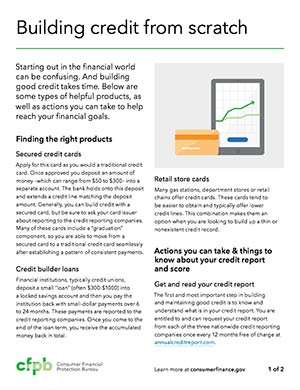Credit Reports & Scores
Credit reports and scores…what is the difference? Despite what most people believe, your credit report does not contain your credit score.
- A credit report is a record that shows how well you have paid your debts.
- A credit score gives a general estimate of your creditworthiness.
While there are many different credit score models, the two most commonly known and used are the FICO Score and VantageScore.
FICO vs VantageScore – 5 Main Differences
Are you credit invisible?
26 million Americans are “Credit Invisible”, meaning 1 in 10 adults does not have any credit history with one of the three national credit reporting agencies. An additional 19 million consumers have “unscorable” credit files, which means they either have a “thin file” with insufficient credit history or they have a “stale file” with a lack of recent credit history. Together, the unscorable and credit invisible make up 20% of the US adult population. Click or tap the image to access a Building Credit from Scratch PDF.

